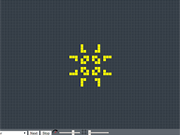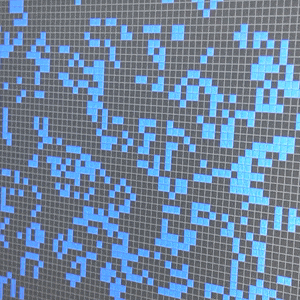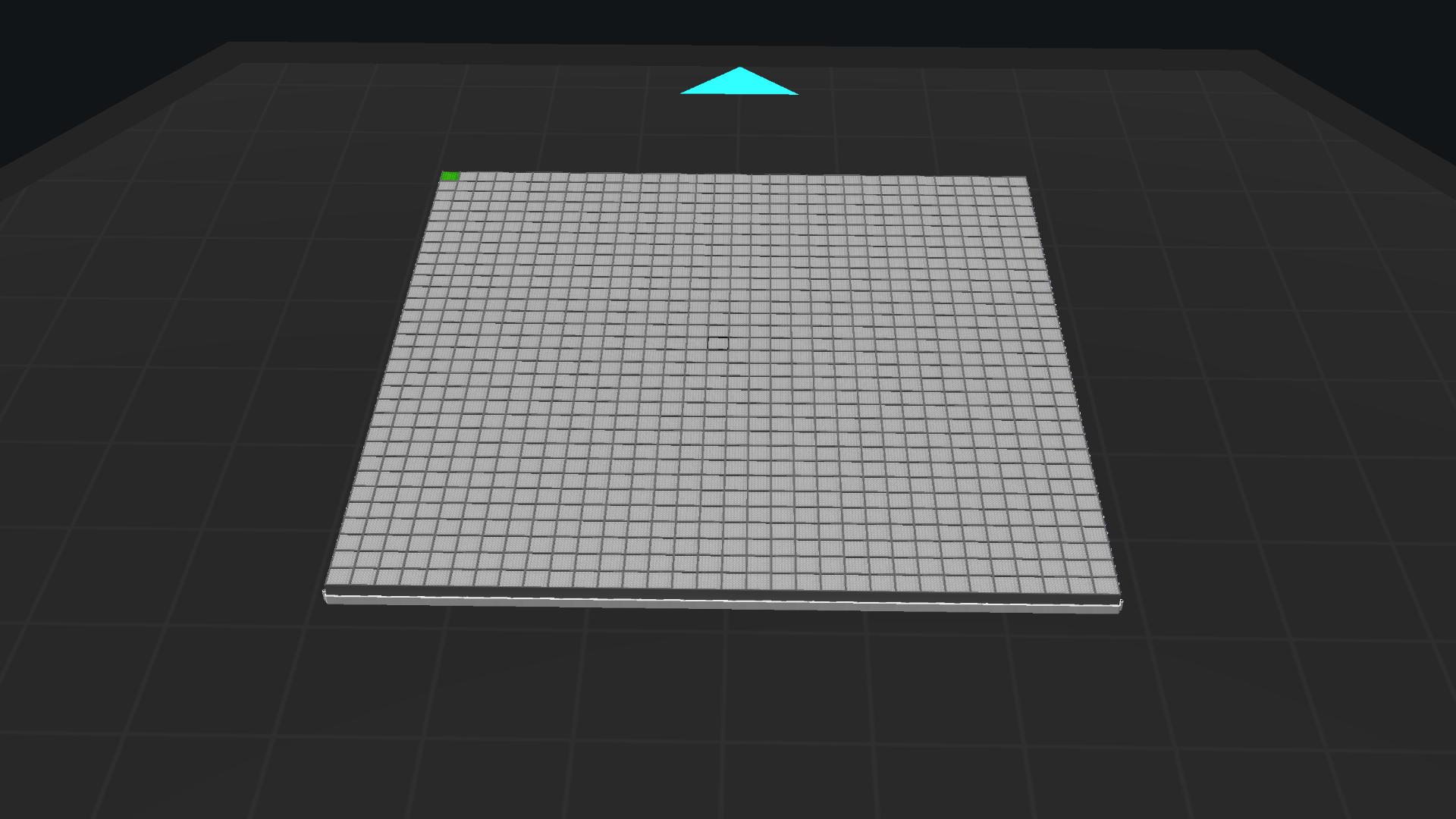

This is fine for some kinds of play, but hardly represents the full spectrum of what we can aspire to. Will those visions be models of constraint? Trapping players in binary worldviews? Worlds where we are alive or dead? Right or wrong? Winners or losers? In building our own small universes of play, the rules enact our vision of how the world works. And in our reduction, in our choices about what to include or exclude, what to allow or disallow, we make clear what we care about, our focus exposes our values, our concerns. We reduce for the sake of clarity and feasibility. When we model life with simulations like Conway’s, we know we leave much of this nuance out. No matter how we try to simplify it, we all know in our experience that life itself is filled with grays, with nuance, with layers of perspective and problematizing factors. That’s because life, real life, is not either, or it is not on versus off it is not black or white or any kind of duality. But of course, pretending that we see life in these layered bits is just a bit of mind-play in itself, just a bit of squinting and willful blindness to what’s lacking in the simulation. Such lovely surprises have emerged from these patterns to shock and delight us and because they seem to be self-generating, we react to them as if they are life itself. We have built universes of play on a foundation of checking the state of bits like this.

In this granular sense, Conway’s game of “life” is really a game of bits, and is the ancestor of all digital games, which, in their underlying architecture are all built upon this same kind of simple check: is something on or off, alive or dead, in or out, up or down, red or blue. The potential for these cells is simple and binary: they are on or off. One of the reasons that Conway’s project is called a “game” is because it is a set of rules, three simple, unbending rules that are enacted equally across each of the cells of the grid. about life and the kind of multilayered answers that we need to be able to parse in order to engage with it today. “Conway’s Game of Life” is, in actuality, neither a game nor life, but it’s a convenient straw man for what we are all talking about at Games for Change: games that go beyond simple, situational conflicts, such as combat and direct confrontation, and instead look at more complex, layered questions about life and the kind of multilayered answers that we need to be able to parse in order to engage with it today. These rules, when enacted on a two-dimensional grid of cells, each of which is either “populated” or “unpopulated,” can produce a staggering array of algorithmically interesting “organisms.” A universe of black and white creatures that seem to spontaneous emerge from these simple interactions. The point of this game is to experiment and create a self-sustaining ecosystem.In 1970, the British mathematician John Conway devised a fascinating set of rules for infinite pattern generation. The concept of the game is to simulate an ecosystem players may modify the genetics of the plants and animals that inhabit the virtual world. “SimLife: The Genetic Playground is a computer game produced by Maxis in 1992. “SimAnt: The Electronic Ant Colony is a 1991 life simulation video game by Maxis and Maxis’s third product, focusing on ants.” “OpenWorm is an open source project dedicated to creating a virtual C. “The Brain Simulation Platform will use parallelised versions of the well-established Neuron, STEPS and NEST simulators and will exploit simulation workflows and tools developed by EPFL’s Blue Brain Project.” Human Brain Project - Simulation Platform “virtual creatures constructed from complex networks of virtual brain cells and biochemical reactions and genes”ĭeveloped by Steve Grand, creator of Creatures. Biological homeostasis of the global environment: the parable of Daisyworld.Note that there are several recreations of the Daisyworld simulation available online. It is meant to mimic important elements of the Earth-Sun system, and was introduced by James Lovelock and Andrew Watson in a paper published in 1983 to illustrate the plausibility of the Gaia hypothesis.” “Daisyworld, a computer simulation, is a hypothetical world orbiting a star whose radiant energy is slowly increasing or decreasing. Conway’s Game of Life - JavaScript/Canvas implementation.“The Game of Life, also known simply as Life, is a cellular automaton devised by the British mathematician John Horton Conway in 1970.” “Reconstructing the brain piece by piece and building a virtual brain in a supercomputer-these are some of the goals of the Blue Brain Project.”

A compilation of interesting life simulation projects.


 0 kommentar(er)
0 kommentar(er)
